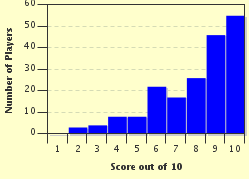Quiz Answer Key and Fun Facts
1. I caught a main line train into Euston station. In what general direction does this railway line come from?
2. After arriving safely at Euston, I was walking towards the exit when I got stopped by a camera-toting tourist looking for directions to a park, the one with the snake lake in it, as he put it. I was able to help him. In which park can you find the Serpentine?
3. One of London's largest parks, this park is more or less divided in half by the Serpentine. The Long Water, its extension to the west of the Serpentine Bridge, forms part of which adjoining Royal Park?
4. The smiling camera-toting tourist headed off for the Tube station. Since I had time to spare, I thought I'd pop into the nearby London Zoo. In which park would you find the zoo?
5. Giving its name to the surrounding district of exclusive and expensive residential properties and with a herbaceous connection, what is the name of the hill immediately to the north of London Zoo?
6. Home also to Euston station and the British Museum, in which axe-shaped borough would you find London zoo?
7. My walk to the British Museum took me through an area thick with institutions associated with the arts, education and medicine. Lending its name to an artistic and intellectual group which included Virginia Woolf and E. M Forster amongst its members, what is the name of the district surrounding the British Museum?
8. The visit drew a blank. My friend suggested I call in at the Petrie Museum (of Egyptian Archaeology) since I was in the neighbourhood. What educational institution's main campus, of which the Petrie Museum forms part, lies just to the north of the British Museum?
9. Turning up at the Petrie Museum, I encountered a difficult doorman who had probably emerged from some Petri dish long ago. Since I was wanting entry outside public hours and hadn't booked in advance, he wanted to check that I was a genuine researcher. Working at a centre of Egyptology, it was perhaps no surprise that he asked where the Rosetta Stone is to be found. Where is it?
10. The follow-up question from the guard at the Petrie Museum was: "One of Cleopatra's Needles is to be found beside the Thames. Where?"
Source: Author
suomy
This quiz was reviewed by FunTrivia editor
spanishliz before going online.
Any errors found in FunTrivia content are routinely corrected through our feedback system.
